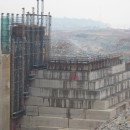

The global canon of climate legislation has undergone significant changes over the last four decades. These changes in recent years have included a growing body of signature laws and initiatives spearheaded by countries in the global South, many of which are disproportionally affected by decades of uncurbed global environmental degradation and greenhouse gas emissions.


For our interactive world map showing all climate laws per country going back four decades, click
here:


The unification of the two currencies circulating in Cuba, announced by the government but without any clear timeframes, will put an end to two decades of a dual currency system that was introduced when the country was brought to its knees by the collapse of the Soviet Union.
But experts say the inequalities that emerged during the severe economic crisis will not be resolved through mere monetary reform.
The following graphic provides a timeline showing the key developments in the dual currency system and the way nominal wages, revenue, savings and liquidity have evolved.


The dictatorship headed by General Augusto Pinochet (1973-1990) from start to end systematically dismantled every vestige of “the Chilean path to socialism” that the government of Salvador Allende (1970-1973) had attempted to follow. But it also established political structures that Chilean democracy has not yet managed to eradicate. See the process in the timeline below:


Free, public education is the main demand expressed today by Chilean society, especially the young. The issue is not that Chileans don’t study, or that school enrolment is low. The problem is the growing privatisation of the system, as shown by this graph, and how that has divided students into different categories, in terms of quality of education. It all began with the reforms ushered in by the dictatorship of General Augusto Pinochet (1973-1990).


The controversy is on: the authorities in Brazil say there are not enough medical professionals, and to resolve the problem, they decided to import this “non-traditional product”. Doctors, on the other hand, are opposed to both the diagnosis and the treatment. But there is one thing everyone agrees on: the areas suffering from a shortage of health professionals are the poor suburbs and impoverished areas in the hinterland and remote border areas. The situation in Brazil as compared to itself and to other countries can be seen in this series of interactive maps and graphs.

























